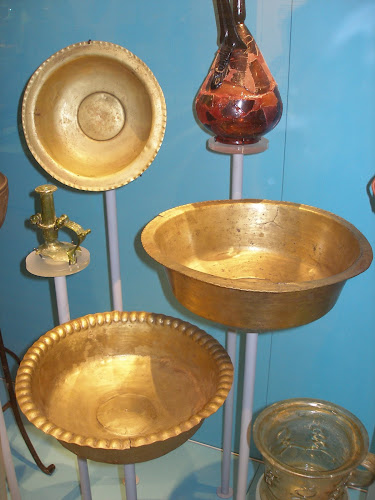When you next visit The Higgins Bedford, put a little time aside to pop
into The Settlement Gallery to stroll round and explore our local archaeology.
Our story begins with a very brief look at the geology of the area and moves swiftly into the Prehistoric period with bones of long gone Woolly Mammoths, Rhinoceroses’ and Cave Bears. The displays continue in chronological order and end with the siege of Bedford Castle and the beginnings of the medieval town.
About half way through your journey your eye will be caught by 3 large glittering copper alloy bowls. The bowls were found buried together in a deep pit in 1856 by workmen building the railway line near Sandy.
The bowls, measuring between 7cm and 11cm high and 23 cm and 31 cm in diameter, are very thin, about 2m thick and they are very lightweight. All three bowls are plain and undecorated apart from simple fluting around the rim edge. Each bowl would have been made by a skilful craftsman beating the shape out of a single sheet of copper alloy.
The bowls are Roman in date and would have originally formed part of a table service belonging to a wealthy household, probably a family living and working in the busy town of Sandy.
Quite why this nest of luxury metal bowls came to be buried near Sandy, we will never know. The most likely explanation could be related to the upheaval and the crumbling of the Roman administration in the province of Britannia, as the Roman Empire went into decline in the late 4th to early 5th century AD.
This transition would have affected all levels of society and many people would have faced an uncertain future. It is quite possible that the owners of the bowls fearing for their future decided to deliberately bury these valuable items to safe guard them until they could return at a later time to dig them up.
Written by Liz Pieksma, Keeper of Archaeology



No comments:
Post a Comment